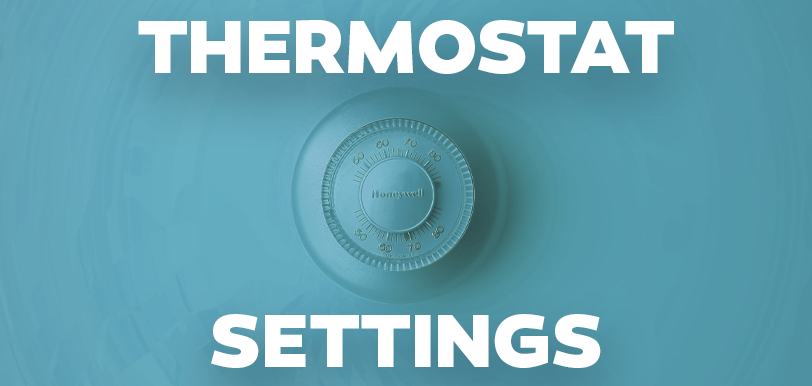Want to save with Paschal? Don’t miss our current offers and specials

Want to save with Paschal? Don’t miss our current offers and specials
Return to Paschal Resource & Education Hub

Along with politics & religion, what you should set your thermostat to is one of those controversial topics that divides us. In an effort to be completely un-biased, we decided to take a look at what temperature setting is best for not only your comfort, but for your wallet. Here is what we’ve found out about thermostat temperature settings.
According to ENERGY STAR, a homeowner can save as much as 10% a year in heating and cooling costs by adjusting thermostat temperatures 7 – 10 degrees Fahrenheit in the summer and winter for eight hours a day. Though you can manually set your thermostat daily, automated thermostats that are programmable & set to run on cycles tend to be more efficient at conserving energy. Many people tend to adjust their thermostat throughout the day depending on how they feel, but what if there was a better way?
Where you choose to install your thermostat can greatly influence its efficiency. You should read the manufacturer’s installation instructions, or consult with your HVAC technician to prevent what is called “ghost readings” or unnecessary furnace or air conditioner cycling. In order to operate it properly, a thermostat should be installed on an interior wall away from any direct sunlight, drafts, doorways, skylights, and windows.
It is important to note, & a common misconception that setting your thermostat above or below your desired temperature in hopes that your home will heat or cool “faster” can actually cost you more money — without actually speeding up the process.
You can save energy & save money in the winter by setting the thermostat to 68°F while you’re awake and setting it lower while you’re asleep or away from home.
Programmable thermostats are generally not recommended for heat pumps. In its cooling mode (in the summer), a heat pump operates like an air conditioner, so turning up the thermostat (either manually or with a programmable thermostat) will save energy and money. But when a heat pump is in its heating mode (in the winter), setting back its thermostat can cause the unit to operate inefficiently, thereby canceling out any savings achieved by lowering the temperature setting. Maintaining a moderate setting is the most cost-effective practice.
It turns out that the best indoor temperature for your home during the summer months is 78 degrees, according to the U.S. Department of Energy. If that temperature falls outside your desired comfort level, then there are several ways to adjust your home’s climate without causing your energy bill to spike. Keep in mind, each degree set above 72 can save you up to 3% on your monthly utility bills.
Set your thermostat at as high a temperature as comfortably possible and ensure humidity control if needed. The smaller the difference between the indoor and outdoor temperatures, the lower your overall cooling bill will be.

If you plan on leaving your home for extended periods of time, then it is best to either program your thermostat to run at higher temperatures in the summer, or colder than normal in the winter. If you leave for more than 8 hours at a time but your thermostat is set to the same temperature, you’ll be paying to heat or cool an empty house. These days, many smart thermostats even allow you to control the temperature settings from your phone or tablet while you are away.
Programmable thermostats are an essential tool that help you regulate your home’s climate & save you money on your energy costs. You can set your thermostat to trigger your HVAC system to start cooling down or warming your home 30 minutes before you arrive, ensuring your interior is at a comfortable temperature when you step inside. Smart thermostats also allow you to control the temperature via your smartphone or tablet, and they can observe when you enter or leave the house and automatically adjust the settings accordingly. They can even help control humidity levels, as many programmable thermostats will display the relative humidity at the push of a button.